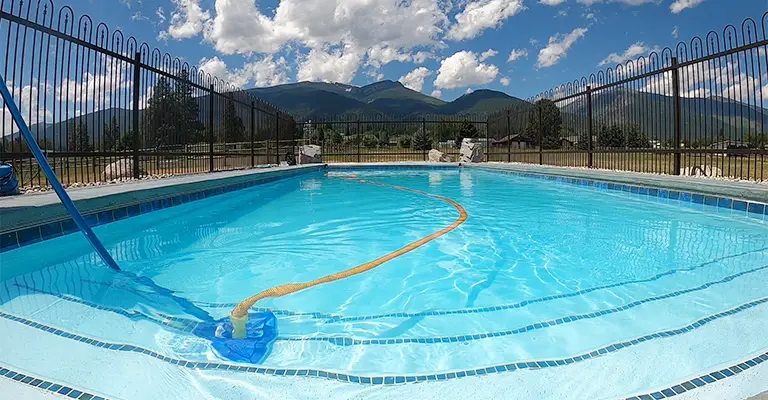The first step in preparing your pool for a swimmable experience is to shock it. Shocking is vital in opening the pool for the season or preparing it for a summer get-together.
Swimming pools are shocked by adding liquid chlorine directly into the water to kill bacteria and remove contaminants. It’s essentially concentrated chlorine that we call pool shock.
The chlorine in your pool can bleach anything it comes into contact with at high concentrations. So, for example, black clothes can turn pink if the concentration is too high, while white clothes can turn yellow if the concentration is too low.
There’s no need to worry about over-shocking your pool. In addition to fashion faux pas, shocks added directly to pool water can result in catastrophes.
By sinking the bottom of your liner, the shock granules will bleach it out. Brittleness and frailty result from bleaching, causing leaks.
How Does Pool Shock Work?
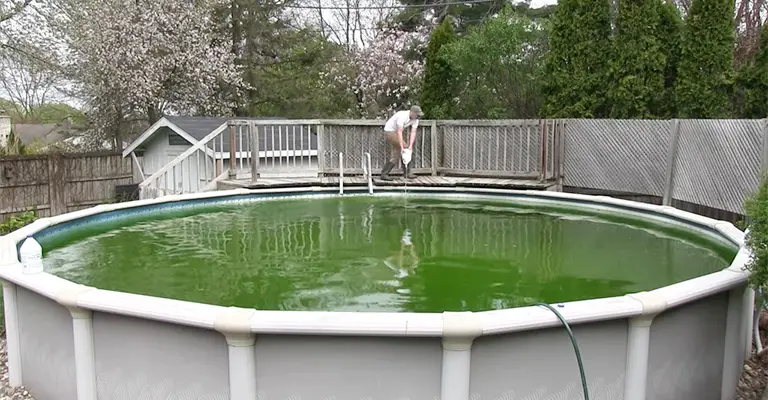
Chloramines in your pool water are oxidized by pool shock. Therefore, super chlorination is also known as “shocking” your pool. If you shock your pool, you sanitize the water and destroy chloramines that have built up over time.
Sweat, oils, and urine contain chlorine that mixes with nitrogen to form chloramines. A byproduct of chlorine performing its function, this is a natural chemical process.
If you have ever walked past a hotel pool, you know what I mean. It is chloramines that cause the strong chlorine smell, indicating that the water hasn’t been adequately sanitized.
In addition to clearing up cloudy water, shocks can be applied to the pool to kill algae growth.
What Is The Best Time To Shock Your Pool?
According to the instructions on chlorine shocks, they must be used after the sun has set.
Due to the sun’s ultraviolet rays, the shock won’t be as effective since it burns off unstabilized chlorine. So, when you shock your pool at night, you ensure that the chemicals work as intended.
Is It Necessary To Shock Your Pool When It’s First Filled?
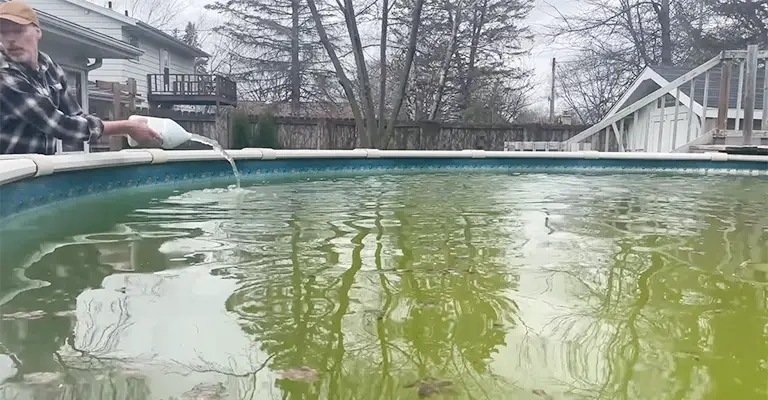
Despite proper treatment, pools can still become a breeding ground for algae and bacteria. So, is it a good idea to shock a new pool? Should you even shock the pool if you are opening up a brand-new in-ground or above-ground swimming pool?
Neither the water nor the contaminants have ever been exposed to contamination. Prepare a bucket of water with the chemical before shock-shocking your pool. You will protect your liner, pool walls, and floor by dispersing the shock evenly in the water.
When avoiding pool maintenance mistakes, you should always add chemicals to water, not water to chemicals. For example, fill the bucket with water before adding the shock to prevent dangerous splash backs.
As well as dissolving shock more easily, warm water will create a kind of chlorine steam that sounds awesome but feels not so awesome.
So, get your bucket of shock water ready by putting on safety glasses, a chemical mask, and gloves that can withstand chemicals.
After this initial fill, it is not recommended to shock the above-ground pool since this can damage the liner.
Even though many agree that a shock treatment should be administered when opening a new pool, owners may still be uncertain when they are ready to swim in their new pool.
Pool Shocking: How Do You Do It?
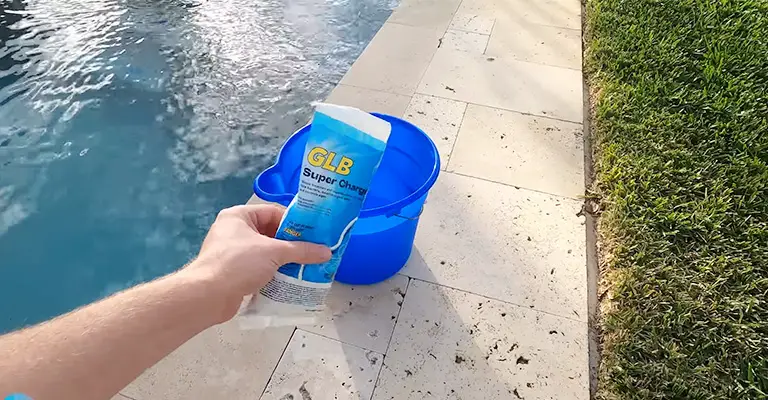
Knowing what you want to achieve is the key to shocking a pool. After swimming for a few hours, apply 20-40% of the chlorine dose after people have been in the water for 40-80% of the chlorine dose before they get in the water.
By doing this, you will be able to maintain a chlorine ratio of 1:1000 or lower, which is safe for swimmers.
For example, a 10,000-gallon swimming pool might be shocked with one pound of liquid chlorine upfront and then another half pound four to six hours later.
Some products must be dosed twice the strength because they break down more quickly – this does not apply to all types of pool shock.
It is recommended that you consult the pool shock product manufacturer for instructions on how much chlorine to use.
When Should I Shock My Pool?
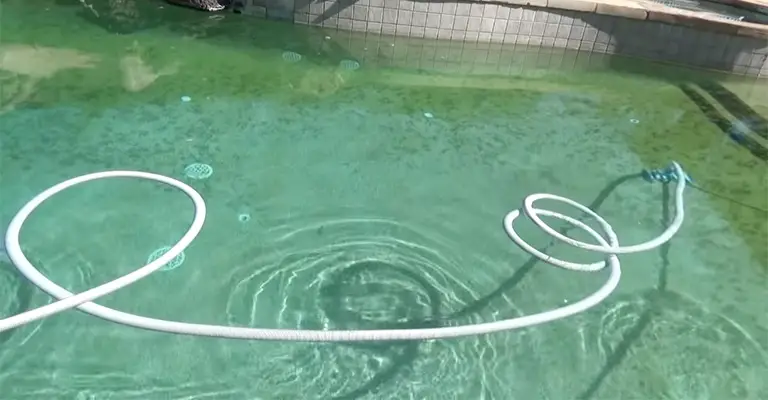
If you want to shock your brand-new pool before you use it, or if you want to wait until a problem arises. It is recommended that you shock your pool only once or twice annually, depending on the type of pool.
The pool should be shocked again if swimmers are experiencing skin irritations, for instance. However, to avoid overwriting previous chlorine residuals, do not add too much chlorine to the water.
Water that is not properly sanitized and shock-dosed can lead to problems such as cloudy water, algae growth, eye irritation, or chemical burns.
Regularly checking the total alkalinity and pH levels is also important if you have an inground pool. You may have to shock it regularly (weekly) if either of these is too high for a properly chlorinated pool.
You Need To Know When To Shock
Shocking the water weekly is an important part of maintaining pool water clarity and keeping it sanitized. In addition, the shock allows you to quickly increase chlorine levels, which will eliminate organic contaminants from the pool.
Start-Up:
To kill bacteria and algae that have developed during the winter, shock your pool when you open it in the spring.
After A Party Or Heavy Use:
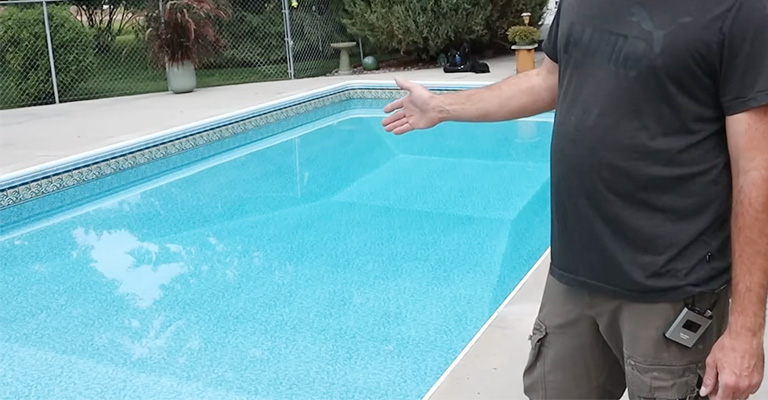
When pools are crowded with active swimmers, chlorine levels can drop dramatically due to bacteria, sweat, cosmetics, and other organic contaminants.
After Extended Periods Of Hot, Sunny Weather:
Pool temperatures can rise in hot, sunny weather due to bacteria growing and chlorine being used up more rapidly.
After Heavy Rain:
As a result of heavy rains, contaminants can be flushed into the pool and the pH level can rise.
Smell Of Chlorine Or Irritated Eyes:
The chlorine smell in a pool or water that makes our eyes red and irritated is something we have all experienced.
The chlorine level in the pool is NOT too high, as most people believe. The water is contaminated with chloramines (Combined Chlorine). This is a good indicator that your pool needs to be shocked.
Pool Closing:
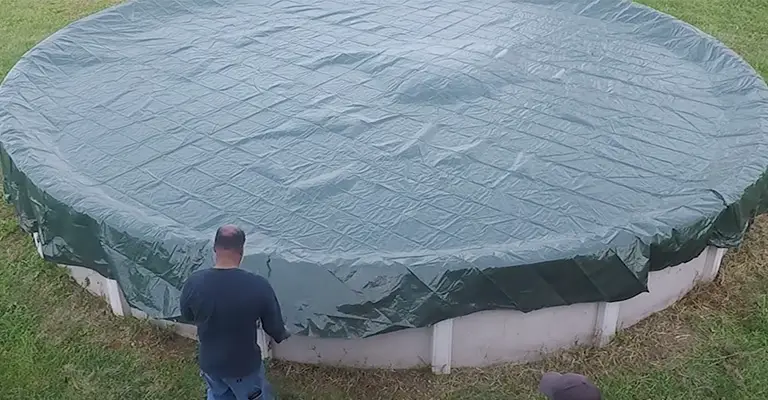
Opening a clean pool in the spring is always easier when the pool is clean at the end of the season.
Is It Safe To Swim In A Newly Filled Pool?
The level of chlorine dioxide in a swimming pool must be monitored and balanced before people can use it.
While many pools are legally required to have a certain amount of chlorine in the water at all times, the level of chlorine dioxide must be controlled and maintained before swimming.
Swimmers who spend too much time in a pool with high chlorine levels may suffer from eye irritation or other health problems.
Swim in your freshly filled pool without shock if you still plan on doing so, but make sure there is enough chlorine before diving in.
Water that appears cloudy or milky, an odor that smells strongly of chemicals, stinging eyes, and burns after applying suntan lotion are all signs. Immediately shock the pool if any of these signs appear.
Is It Safe To Swim In The Pool 12 Hours After Shocking It?
Swimming is usually safe after letting the shock circulate in the water for at least eight hours.
It is, however, recommended that you test the water’s chlorine level before swimming. It may be uncomfortable and dangerous for swimmers to have a high chlorine level in their bodies.
Is There Anything Else I Should Know Before Shock Treating My Pool?
You should always check with your pool shock product manufacturer for specific instructions when shocking your pool.
Furthermore, chlorine should never be mixed with other chemicals without carefully checking the compatibility (including pool shock products, algaecides, and clarifiers).
It is likely that if you do, harmful gases will be released into the atmosphere, such as chlorine gas, bromine gas, and others.
When shocking your pool, you should always wear protective gloves to prevent accidental contact with dangerous chemicals on your skin or lungs.
To ensure that your pH and free available chlorine levels do not fluctuate too much while in use, you should always have a working safety test kit on hand.
A shock treatment after the initial fill is generally not recommended since it can damage the liner.
When you are using a new above-ground pool, you should allow the pool to filter out during regular use. Then, chlorine tablets should be added directly into the water at least once a week.
Final Words
If you handle those chemicals incorrectly, you could seriously harm your pool. Shocking is necessary for good pool maintenance.
But it must be done carefully to prevent serious injury. Irrespective of how you store chlorine, it can literally explode if not stored properly.

